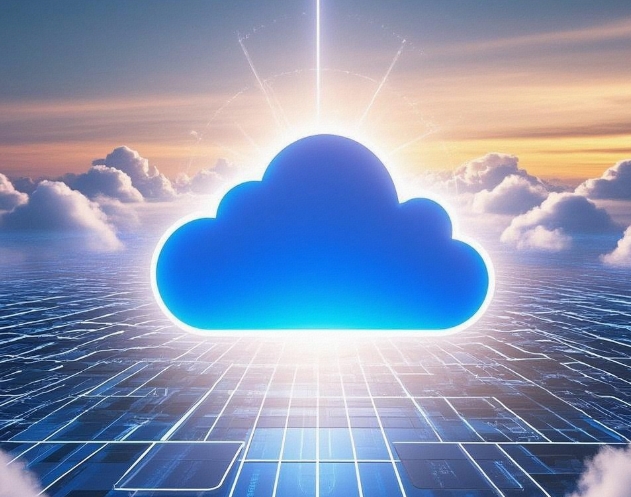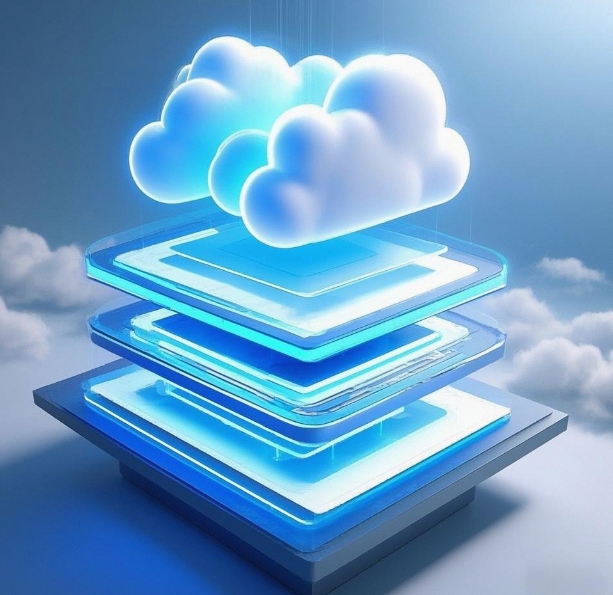Cloud Computing and Edge Computing Applications in IoT Development
- latest articles
- 1.DApp Development & Customization: Merging Diverse Market Needs with User Experience 2.Analysis of the Core Technical System in DApp Project Development 3.How to achieve cross-chain interoperability in Web3 projects? 4.How does the tokenization of points reconstruct the e-commerce ecosystem? 5.How to Set and Track Data Metrics for a Points Mall? 6.What is DApp Development? Core Concepts and Technical Analysis 7.Inventory of commonly used Web3 development tools and usage tips 8.Development of a Distribution System Integrated with Social E-commerce 9.Six Key Steps for Businesses to Build a Points Mall System 10.What is DApp Development? A Comprehensive Guide from Concept to Implementation
- Popular Articles
- 1.Future Trends and Technology Predictions for APP Development in 2025 2.Analysis of the DeFi Ecosystem: How Developers Can Participate in Decentralized Finance Innovation 3.From Zero to One: How PI Mall Revolutionizes the Traditional E-commerce Model 4.DAPP Development | Best Practices for Professional Customization and Rapid Launch 5.How to Develop a Successful Douyin Mini Program: Technical Architecture and Best Practices 6.Recommended by the Web3 developer community: the most noteworthy forums and resources 7.From Cloud Computing to Computing Power Leasing: Building a Flexible and Scalable Computing Resource Platform 8.Shared Bike System APP: The Convenient Choice in the Era of Smart Travel 9.How to Create a Successful Dating App: From Needs Analysis to User Experience Design 10.From Design to Development: The Complete Process of Bringing an APP Idea to Life
In the rapid development of Internet of Things (IoT) technology, cloud computing and edge computing have become its key components. IoT systems collect and process vast amounts of data in real-time through various sensors, devices, and network connections. How to efficiently and reliably handle this massive data is one of the core challenges in IoT development. As two primary computing architectures, cloud computing and edge computing play different but complementary roles, jointly driving the progress and innovation of IoT.
I. Overview of IoT and Computing Architectures
The Internet of Things (IoT) refers to a network structure that interconnects objects with objects and objects with people via the internet. The core value of IoT lies in enabling objects to perceive, identify, and transmit information through real-time data collection and exchange by smart devices, and to make decisions through data analysis, thereby achieving automated and intelligent management.
However, the rapid development of IoT has brought about massive data flows, which often require swift processing and storage to enable real-time decision-making. At this point, the application of cloud computing and edge computing becomes a key technology to address this issue.
Cloud Computing: Refers to providing shared computing resources (such as servers, storage, databases, etc.) over the internet for data storage and processing. Cloud computing features resource sharing, elastic scaling, and pay-as-you-go, allowing businesses and developers to access computing resources as needed.
Edge Computing: Refers to processing data at the source of generation or near the device, rather than sending it to remote cloud servers. This approach significantly reduces latency and bandwidth pressure while improving data processing efficiency.
II. Applications of Cloud Computing in IoT
Cloud computing provides IoT with powerful data storage, computing, and analysis capabilities. Its distributed architecture allows IoT devices to upload generated data to the cloud for centralized management and processing. This centralized computing approach is particularly suitable for handling data generated by large-scale devices and enables long-term data storage and complex analysis.
1. Data Storage and Processing
IoT devices generate vast amounts of data through various sensors, which may come from environmental monitoring, device status tracking, location tracking, and other aspects. Cloud computing can provide massive storage space for this data and process and analyze it with powerful computing capabilities. For example, cloud platforms such as Amazon Web Services (AWS), Microsoft Azure, and Google Cloud offer IoT-specific solutions, including data storage, data analysis, and machine learning functionalities.
2. Data Analysis and Intelligent Decision-Making
Another major advantage of cloud computing is its powerful data analysis capabilities. By transmitting data to the cloud, IoT applications can leverage the cloud's robust computing power to utilize big data analytics, artificial intelligence, and machine learning technologies to uncover underlying patterns in the data, thereby providing intelligent decision support for businesses and users. For instance, in smart homes, cloud computing platforms can analyze user behavior data to offer personalized smart home recommendations, enhancing the user experience.
3. Continuous Monitoring and System Management
Cloud computing platforms enable centralized management and monitoring of large-scale IoT devices. Through the cloud platform, device health status, operational data, and fault information can be synchronized to the cloud in real-time, helping system administrators promptly identify potential issues and perform remote diagnostics and repairs.
III. Applications of Edge Computing in IoT
Edge computing reduces data transmission latency and bandwidth consumption by moving data processing closer to IoT devices. This is crucial for IoT applications that require real-time responses, such as autonomous driving and industrial control scenarios.
1. Reducing Latency and Bandwidth Pressure
Data generated by IoT devices often requires rapid responses. For example, in autonomous vehicles, image data generated by sensors must be processed within milliseconds to make timely driving decisions. If all data were sent to remote cloud servers, latency and bandwidth issues would lead to significant performance degradation. Edge computing can offload data processing tasks to edge nodes near the devices, substantially reducing latency and improving real-time performance and response speed.
2. Ensuring Privacy and Security
Since IoT applications often involve the transmission of sensitive information, such as personal privacy and health data, data security and privacy protection are paramount. Edge computing can move the processing and analysis of sensitive data to local devices, thereby avoiding the risks associated with transmitting sensitive data to remote clouds. For example, in smart medical devices, patient health data can be processed and analyzed locally, with uploads to the cloud only when necessary for further analysis and storage.
3. Offline Processing and Autonomous Control
Some IoT applications may need to continue operating in environments without network connectivity. Edge computing enables processing at the device level, allowing IoT devices to function normally even when the network is unstable or disconnected from the cloud. For instance, in remotely monitored industrial equipment, edge computing nodes can perform data analysis and control on-site, ensuring the equipment's proper operation.
IV. Synergistic Role of Cloud Computing and Edge Computing
Although cloud computing and edge computing each have their independent advantages, in IoT applications, they often complement and work together. IoT devices partially upload data to the cloud for centralized analysis and long-term storage, while delegating tasks with high latency requirements and real-time demands to edge computing.
1. Hierarchical Data Processing
A common architecture is the combination of "edge computing + cloud computing." In this model, edge nodes are responsible for preliminary data processing and filtering, with only screened key data uploaded to the cloud for further analysis. This ensures real-time performance while reducing the data burden on the cloud. For example, in intelligent transportation systems, edge nodes can process real-time video streams generated by traffic monitoring cameras, uploading only meaningful events or anomalies to the cloud for in-depth analysis.
2. Dynamic Resource Scheduling
As the number of IoT devices increases, the resource demands of both the cloud and edge nodes are constantly changing. To ensure efficient system operation, edge computing and cloud computing can perform dynamic resource scheduling. When edge computing nodes are overloaded, some tasks can be transferred to the cloud for processing, and vice versa—when cloud resources are strained, some computing tasks can be delegated to edge nodes.
V. Challenges and Prospects in IoT Development
Despite the strong potential of cloud computing and edge computing in IoT, they still face numerous challenges in practical applications.
1. Network Bandwidth and Latency Issues
In some remote areas or environments with poor network conditions, IoT devices may face insufficient bandwidth and high latency. Ensuring the collaborative work of cloud computing and edge computing while guaranteeing real-time data processing is a major challenge.
2. Data Security and Privacy Protection
With the proliferation of IoT applications, data security and privacy protection have become urgent issues. Ensuring data security in both cloud and edge computing and preventing data leaks or misuse are critical topics in IoT development.
3. Allocation and Optimization of Computing Resources
In environments where cloud computing and edge computing work together, optimizing the allocation of computing resources to make collaboration between edge nodes and the cloud more efficient is also a technical challenge. Developers need to design appropriate algorithms and architectures to dynamically schedule resources according to different needs.
VI. Conclusion
Cloud computing and edge computing play crucial roles in IoT development. Cloud computing provides IoT with powerful data storage, computing, and analysis capabilities, while edge computing demonstrates unique advantages in reducing latency, improving real-time performance, and ensuring data security. As technology continues to evolve, cloud computing and edge computing will collaborate more closely in IoT applications, driving innovation and progress in areas such as smart homes, smart manufacturing, and autonomous driving.
-

How to Use IoT Development to Enhance Supply Chain Efficiency
With the rapid development of the global economy and the deepening of digital tr···
-

Development and Innovation of the Internet of Things in the Healthcare Sector
With the rapid advancement of information technology, the Internet of Things (Io···
-

Data Storage and Analysis Methods in IoT Development
The Internet of Things (IoT) is one of the most revolutionary innovations in tod···

 Blockchain
Blockchain












